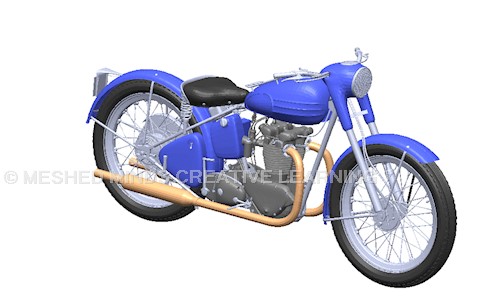 CAE Training Services Nearby
CAE Training Services Nearby
Best CAE Training in Nagpur as on Oct 04, 2025
CAD Infield Technologies
CAD Infield Technologies, located in Navi Peth, Pune, specializes in providing comprehensive training in design tools, catering to both beginners and advanced learners. Our course offerings include a wide range of design software, ensuring that students gain hands-on experience with industry-standard tools. Delivered through a mix of online and in-person sessions, our training programs are designed to be flexible and accessible. Our experienced instructors, who bring years of industry expertise, are dedicated to providing personalized guidance and support. Practical learning is at the core of our curriculum, with real-world projects and assignments that prepare students for the demands of the design industry. We offer robust student support services, including career counseling and job placement assistance, to help you transition smoothly into the professional world. Interested in joining us? Enroll today to take advantage of our competitive pricing and flexible payment plans. CAD Infield Technologies is committed to your success, offering a pathway to lucrative career opportunities in the design field. Start your journey with us and unlock your creative potential.
- 3D CAD
- Mechanical CAD
- Catia 3D
- Near Janjira Hotel
- Enquire here for fees details.
- Classroom
- Online
"Hello engineers, I wanted to express my heartfelt gratitude for the learning and growing with CAD Infield Technologies Pune. The experience and knowledge gained during my course journey have been invaluable, and I am grateful for the support and guidance of Mr. Aatmaling sir and Mrs. Swati ma'am."
"Hello friends, I recently completed the Design Thinking course at Cad Infield Technology, Pune, and I am extremely satisfied with the overall experience. The course provided a comprehensive understanding of design calculations, as well as hands-on training with industry-standard CAD software like SolidWorks. The technical training was both thorough and practical, allowing me to apply my knowledge effectively. What stood out most was the holistic approach of the program, as it not only focused on technical skills but also emphasized the development of interpersonal skills. The emphasis on communication, collaboration, and problem-solving has helped me improve my overall professional competency. The learning environment was supportive, making it easy to grasp complex concepts. I highly recommend this course to anyone looking to enhance their skills in design thinking, CAD software, and interpersonal skill development."
Atlanta Institute
Atlanta Institute in Hanuman Nagar, Nagpur, stands out as a premier destination for IT programming language training. Our comprehensive course offerings include Digital Literacy, Programming Languages, and Shell Scripting, tailored to equip students with essential skills for the tech industry. We pride ourselves on a blend of online and in-person classes, ensuring flexibility for all learners. Our curriculum is designed by certified instructors with extensive industry experience, providing students with practical, hands-on learning opportunities. From beginner to advanced levels, our courses cater to diverse learning needs and career aspirations. We offer robust student support, including mentorship, career counseling, and placement assistance, to guide students every step of the way. Detailed enrolment information is available on our website, and our affordable pricing options, along with financial aid, make quality education accessible. For those with questions, our comprehensive FAQs section provides clarity on common queries. Ready to advance your career in IT? Join us now and take the first step toward a brighter future.
- Classroom
- MS CIT
- NIELIT 'O' level
- C sharp
- C/C++
- Objective-C Sharp
- PCP
- Perl
- PHP
- Python
- For information on fees, call us.
"Thanks to atlanta institute for giving me such a good learning experience. I had successfully coThanks to atlanta institute for giving me such a good learning experience. "
"i had done C language from atlanta computer classes Class is very good, teachers are so cooperative. teach well.... satisfied with there teaching. "
Atlanta Computer Institutes
Atlanta Computer Institutes in Dharampeth, Nagpur, stands as a premier destination for IT programming language training, offering an array of courses designed to cater to both beginners and advanced learners. Our curriculum includes Digital Literacy courses and comprehensive training in various programming languages, ensuring students gain the skills needed to excel in today's tech-driven world. Courses are delivered through a blend of online and offline modes, providing flexibility to suit different learning preferences. Our certified instructors bring a wealth of industry experience, ensuring that students receive practical, hands-on training. We pride ourselves on our robust student support system, offering guidance and resources to help learners succeed. Enrollments are open year-round, making it easy to start your educational journey at any time. With a focus on career opportunities, our courses are designed to enhance employability and open doors to lucrative job prospects. Competitive pricing and flexible payment options make our programs accessible to a wide audience. For more information, check our FAQs or contact us directly. Ready to elevate your IT skills? Join us now and take the first step towards a promising career in programming.
- Classroom
- MS CIT
- C sharp
- C/C++
- PHP
- Python
- R
- Advanced C Programming Training
- Advanced C++ Training
- Advanced JAVA Training
- Call for details on fees.
"Quick match found near my area. But would appreciate if they could provide more details of other institutes near my area and also the best institues available at my city according to there ratings"
"I joined Atlanta Computer Institutes, Dharampeth for Basic computer education, It was 3 months course I paid 6000 as a course fee it was a nice experience with this institute. the faculty they were provided has deep insight knowledge and cleared my all doubts I am very much satisfied with this institute."
Sunrise Infotech
Sunrise Infotech in Dharampeth, Nagpur, is a premier institution offering comprehensive training in design tools, tailored to meet the needs of aspiring designers and professionals. Our diverse course offerings include in-depth modules on industry-standard software such as Adobe Creative Suite, AutoCAD, and SketchUp. Delivered through both online and in-person classes, our programs ensure flexibility and convenience for all learners. At Sunrise Infotech, we emphasize practical learning with hands-on projects that mirror real-world scenarios, fostering a deep understanding of design principles. Our experienced instructors, who bring years of industry expertise, are dedicated to providing personalized guidance and support. Students can benefit from our robust support system, which includes career counseling and job placement assistance, ensuring they are well-prepared for the competitive job market. Enrolling in our courses is straightforward, with detailed information available on our website. We offer competitive pricing and flexible payment plans to make our training accessible to everyone. Start your journey with us and unlock numerous career opportunities in the dynamic field of design. Join us now and take the first step towards a successful career in design.
- 3D CAD
- ArchiCAD
- AutoCAD 2D
- AutoCAD 3D
- AutoCAD Civil 3D
- Please email for fees information.
- Classroom
- Online
"Excellent training Institute in nagpur. Autocad , revit, 3dsmax and msp training is very nice. Nice teaching. "
"Excellent training institute in nagpur. I am from jd college of engineering. Nice teaching and nice enviroment"
Design Solution
Design Solution in Bhanwar Kuwa, Indore, is your go-to destination for mastering design tools through comprehensive training programs. Our diverse course offerings include in-depth training on industry-standard software like Adobe Creative Suite, AutoCAD, and SketchUp, catering to both beginners and advanced learners. Delivered through a blend of online and in-person classes, our courses ensure flexibility and convenience. Our curriculum is designed to provide hands-on experience, enabling students to apply their skills in real-world scenarios. Led by a team of seasoned instructors with extensive industry experience, our training programs are both insightful and practical. We pride ourselves on our robust student support system, offering guidance and resources to help you succeed. Interested in advancing your career? Enroll today to gain the skills that top employers are looking for. With competitive pricing and various financial aid options, our programs are accessible to all. Start your journey with Design Solution and unlock a world of career opportunities in design. Join us now and transform your creative potential into professional success.
- Adobe Illustrator
- Adobe Photoshop
- 3D Studio Max
- 3D CAD
- ArchiCAD
- Near Bhawarkuan.Sueare
- Please call for fees details.
- Classroom
- Online
"Best Institute for cad cam cae indore location "
"Best insitute "
Threeh Systems Pvt. Ltd.
Threeh Systems Pvt. Ltd., located in Pratap Nagar, Nagpur, is a premier institution offering a comprehensive range of IT programming language training. Our curriculum includes digital literacy courses, programming languages training, and shell scripting training, designed to cater to both beginners and advanced learners. With a blend of interactive online and in-person classes, we ensure flexible learning options to suit every schedule. Our courses are led by certified instructors who bring a wealth of industry experience, ensuring that students gain practical, hands-on knowledge. At Threeh Systems, we emphasize practical learning, equipping students with the skills needed to excel in real-world scenarios. We provide robust student support, including mentorship and career guidance, to help you navigate your learning journey and beyond. Interested candidates can easily enroll through our user-friendly online portal. Our training programs are competitively priced, with various financial aid options available. For those with questions, our comprehensive FAQ section offers detailed answers to common queries. Ready to advance your career in IT? Join us now and take the first step towards a brighter future.
- Classroom
- Online
- BCC & CCC
- Business Process Management (BPM)
- MS CIT
- NIELIT 'A' level
- NIELIT 'B' level
- NIELIT 'C' level
- NIELIT 'O' level
- PGDCA
- Product Life cycle Management (PLM)
- Software Project Management (SPM)
"Best training and placement company"
"Amol sir is teching very good "
CADD Mastre Training Services
CADD Mastre Training Services in Shankar Nagar, Nagpur, excels in providing top-notch design tools training tailored to meet industry standards. Our diverse course offerings include AutoCAD, Revit, SolidWorks, and other essential design software, ensuring that students gain comprehensive knowledge. Delivered through both online and in-person modes, our training programs are designed to accommodate various learning preferences. At CADD Mastre, practical learning is at the forefront, with hands-on projects that simulate real-world scenarios. Our team of experienced instructors brings a wealth of industry expertise, guiding students through every step of their learning journey. We pride ourselves on our robust student support system, offering personalized assistance to help you succeed. Ready to take the next step? Enroll today and unlock numerous career opportunities in the design and engineering sectors. Our courses are competitively priced, with flexible payment options available to suit different financial needs. Join us now and transform your skills with CADD Mastre Training Services.
- 3D CAD
- ArchiCAD
- AutoCAD 2D
- AutoCAD 3D
- AutoCAD Civil 3D
- Enquire about fees directly.
- Classroom
"good institute facultys are supportive"
"It is best institute in nagpur.. They provide important course material .."
Codeango (OPC) Private Limited
At Codeango (OPC) Private Limited located in Aurangabad City, Aurangabad, we specialize in a diverse range of IT and engineering training courses tailored to equip you with the skills needed for a successful career. Our SAP training, led by certified instructors, offers in-depth knowledge and practical learning experiences, ensuring you are job-ready. We also provide comprehensive training in Adobe, Amazon Web Services, ANSYS, CAD & CAM, Cloud Computing, Database Administration, Database Development, DevOps, Engineering Design, Google Cloud, Microsoft Azure, Oracle DBA, Oracle Fusion Middleware, Oracle OS & Admin, Salesforce, and both SAP functional and technical training. Whether you prefer online or offline classes, our flexible modes of delivery cater to your needs. Our courses are designed with a strong focus on practical learning, supported by industry-experienced instructors. We provide robust student support and clear enrolment information to make your learning journey seamless. Start your journey with us today to unlock numerous career opportunities in the tech industry. Please call for more details on our fee structure and locate us near .
- Online and Offline
- Please call for more details
Meshed Minds Creative Learning
Meshed Minds Creative Learning in Ambattur, Chennai, offers comprehensive training in design tools tailored to meet the needs of aspiring designers and professionals. Our courses cover a wide range of design software, from Adobe Creative Suite to AutoCAD, ensuring students gain hands-on experience with industry-standard tools. Delivered through both online and in-person classes, our programs are designed to accommodate diverse learning preferences. At Meshed Minds, we pride ourselves on our team of experienced instructors who bring real-world expertise to the classroom, making learning both practical and engaging. Our student support services are robust, providing personalized guidance to help you navigate your educational journey. Whether you're looking to enhance your skills or pivot your career, our courses are structured to open up new career opportunities in the design industry. Detailed enrolment information is available on our website, and we offer flexible payment plans to make our courses accessible to all. Start your journey with Meshed Minds today and transform your creative potential into professional success. Join us now and take the first step towards a rewarding career in design.
- 3D CAD
- AutoCAD 2D
- AutoCAD 3D
- Mechanical CAD
- NX CAD
- Please email for fees information.
- Classroom
"Well pleased with this institute. I have joined this Meshed Minds Creative Learning centre for my Engineering design training for Unigraphics. Their way of instructing and approach was good. Their coaching also very nice. I paid nominal fees for that coaching. I am attending daily online classes. I am happy with their coaching."
"They offer good value for money CAD courses. Online lecturer is very knowledgeable and easy to understand. Very satisfied with their service."
Indian Institute of Electronics Sangam Big Cinema
Indian Institute of Electronics Sangam Big Cinema in Nandanvan, Nagpur, is a premier destination for mastering design tools. Our diverse course offerings include training in industry-leading software such as Adobe Creative Suite and AutoCAD, designed to cater to both beginners and seasoned professionals. Delivered through a blend of online and in-person sessions, our courses provide flexibility and convenience to suit your schedule. Our instructors, with years of industry experience, offer unparalleled insights and guidance, ensuring a comprehensive learning experience. We pride ourselves on robust student support, offering personalized mentoring and career counseling to help you achieve your professional goals. Interested in enhancing your skills? Enroll today and take advantage of our competitive pricing and flexible payment plans. The skills acquired here open doors to numerous career opportunities in fields like graphic design, architecture, and digital marketing. Detailed enrollment information is available on our website, where you can also explore potential financial aid options. Start your journey with us and transform your passion for design into a rewarding career. Join us now to benefit from our expertly crafted curriculum and supportive learning environment, tailored to help you succeed in the dynamic world of design.
- Classroom
- Online
- 3D Animation
- 3D CAD
- 3D Studio Max
- 3D Studio Max1
- Reach out for fee details
- Near Allahabad Bank
"Excellent Faculty And Advance Setup For CAD Training Very Useful Tip & Training."
"One of the best institute of Nagpur for CAD/CAM training in civil and mechanical engineering having excellent faculty."











